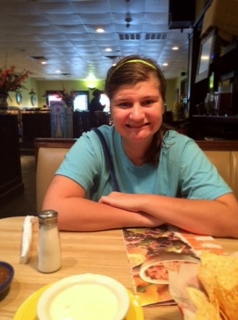
Diagnosis
My Life with Dysgraphia by Caroline Addams

Learning to write was a challenge for me. It was hard to make it readable for the teachers. I was trying, but I always was messing up. One summer, I had a special teacher that helped me with writing the letters. It helped, but I still had problems. It made me feel like I was different. I felt like it was a bad thing that I was different. I started using a computer at school but the one they gave me didn’t work so well. I didn’t like having to sit away from my friends to use the computer.
The teachers made me use it but I didn’t like it. I didn’t feel like it helped me very much. In 6th grade, we looked at different schools I could go to that would help me. We found one that seemed like a good fit. I started using a Macintosh at school which was what I had at home. I didn’t have to go to a desk in the way back of the room and I could stay with the rest of the class and do my work. Other kids had similar problems so it made me feel better about myself as a learner.
I learned that I am unique and there is no one else in the world who is like me. I learned that typing actually did help me to learn better. Handwriting is still an option but I can type things easier. I learned that there are many strategies I can use to learn better and make things easier to do. I can ask questions and get more attention because the classes are smaller. Not everyone is perfect. Being different from everyone is not such a big deal for me anymore.
Does anyone know what this is called? It’s called dysgraphia. It means having problems with writing/spelling and it does not mean problems with reading. People with dysgraphia may also have dyslexia or attention deficit disorder. We are just as smart as everyone else, we just have problems showing it. Famous people with dyslexic dysgraphia include Pres. George Washington, Gen. George Patton, scientist Albert Einstein, and mystery writer Agatha Christie.
Caroline Addams